
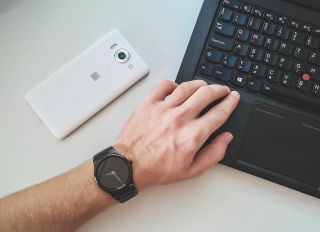
Whether you genuinely loved the experience, hated it wholeheartedly, or somewhere in between, the trusty ol' IBM, errr ... Lenovo ThinkPad likely represents a range of memories.
For the past 13 years, ending in January 2017, I worked for the same large technology publishing company. A lot changed during my time there. New websites launched, and websites folded. Talented writers, editors, managers and sales folks came and went. Entirely new forms of computers were invented. Tech giants rose and fell. But there was always one constant at my former company: More employees used ThinkPad laptops than any other PCs ... or Macs. By a long shot.
This is probably a familiar scenario if you have worked in the traditional corporate world, where IBM used to reign supreme — and where ThinkPads, now made by Lenovo, still hold their own.
Even if you've never called a cubicle home from nine to five, the ThinkPad phenomenon was evident in every major train station or airport in every big city in the U.S. and beyond. All it took was a quick look around to see a handful of men and women in spiffy business entire, dutifully clacking away on their unremarkable, matte black, boxy ThinkPads while they waited for their next train or airplane. If you weren't looking for it, maybe you missed it. But once you saw a ThinkPad and kept an eye out, they were — and to a lesser degree today, still are — everywhere.
How did this happen? And why?
How ThinkPads took the enterprise by storm
The answers to those questions are relatively simple, and they date back to the 1980s, when the following quote was well known in business technology circles: "Nobody ever got fired for buying IBM."
The saying meant that for corporate technology buyers, IBM was the safe bet. And even if smaller players had more interesting and potentially valuable options, the risk often wasn't worth taking, because IBM was "good enough."
Get the Windows Central Newsletter
All the latest news, reviews, and guides for Windows and Xbox diehards.
IBM and its ThinkPads became the safe bet because they got the job done.
No chief information officer (CIO) would be caught dead speaking that sentence today, but in many ways, the concept still holds true. And it's a real reason why ThinkPads took hold in the enterprise and then spread across large organizations like a Southern California blaze during dry season.
Of course, IBM and its ThinkPads became the safe bet because they simply got the job done. They were never sexy, hardly even a bit cool. But that was sort of the point. They were tools, like a Craftsman hammer, and they weren't supposed to be visually pleasing or trendy. That's largely changed today, thanks to PCs such as Lenovo's new 2017 ThinkPad X1 Carbon, of course. (If you haven't seen it yet, don't miss our review. It's one serious PC.)
Lenovo ThinkPad X1 Carbon (2017) is an iconic business laptop, perfected
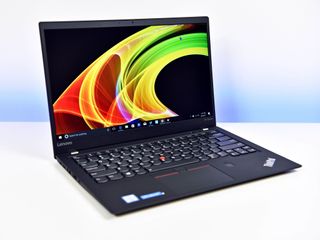
And like any good tool, ThinkPads were (mostly) durable and reliable. The ThinkPads of old took a kickin' and kept on clickin'. (I literally tried to covertly damage my three-year-old work ThinkPad T60 at one point, for reasons that will remain unspecified here, and I just could not kill the thing. It was the Jason Voorhees of PCs.)
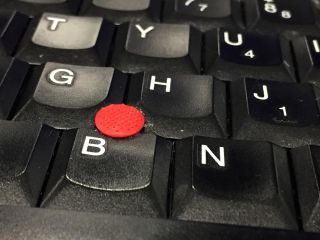
From a corporate IT perspective, ThinkPads checked all of the most important boxes. If something broke, they were simple to take apart and fix when necessary. Components were easy to come by and were for the most part relatively affordable. You could easily pop out the battery and click a clunky extended-life pack on there instead. You remember those big-ass batteries that stuck out of the back side of ThinkPads like some sort of rigid vestigial appendage, right?
And IBM, eventually Lenovo, made great docking stations that made it simple to "click" your ThinkPad in and out with the press of a button and connect to your monitor or other peripherals in a few seconds. (Man, I loved those docks ...)
Then there's the classic ThinkPad keyboard, with its perfectly contoured keys that seemed to snuggle the tips of your fingers, like a well-worn glove. I used to type on my ThinkPad's keyboard when it was connected to a monitor, instead of using an external keyboard, because it was that much better.
Oh, and that red TrackPoint "nub" — or as some of my colleagues affectionately called it, the ThinkPad "nipple." It's been called "the gold standard" for pointing sticks. You either loved or hated the TrackPoint button, but I always fell squarely on the affectionate side of things. The little red button had a comforting bumpy texture, not unlike a cat's tongue, that always felt like home to me. When I eventually switched away from the ThinkPad, it took me months to get used to a more typical trackpad. In some ways, I'm still not used to it and still have "phantom TrackPoint urges."

These are just a few of the reasons why corporate IT departments approved ThinkPads and why the last couple of decades of cubicle jockeys often carried them in their shoulder bags or briefcases.
But the relationship wasn't always harmonious.
A love-hate relationship with the ThinkPad
I have fond memories of my many ThinkPads (I recall using at least four different models), and though it's easy to forget, I also hated my ThinkPads at times. A lot. Like, vitriol. (Remember the whole purposely trying to kill my PC thing? That may have happened more than once ...)
I have fond memories of my ThinkPads but I also hated them. A lot.
My ThinkPads always seemed to work fine for the first six months or a year after I got them. Then, inevitably, something would start to fall apart or fail. First, it'd be the "G" or "H" keys next to the TrackPoint nub. One or both would stop working, or even break off, presumably because I was always putting so much pressure on the nub when I used it for navigation. Then the battery life would get so bad that I couldn't go for more than an hour (sometimes less) without charging, which made covering large technology events such as CES, where power outlets were as scarce as empty taxis, lots of fun. (That's where those funky, clunky extended batteries came into the picture.)
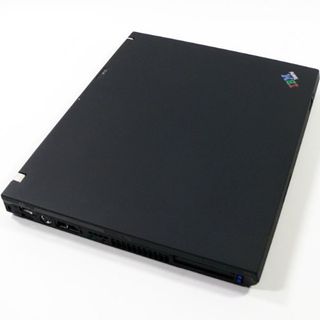
I also used one of the first ThinkPads with a biometric fingerprint reader. I believe it was a T42. I thought it was so cool, I didn't even mind that it consistently took me anywhere from five to 10 swipes to authenticate.
But there was a big problem: My IT department had some policy set that after a certain number of failed swipes, corporate managed ThinkPads would be locked down. And the password wouldn't work. So, after IT spent a few days running around the office, dealing with people who'd locked themselves out of their own computers by madly swiping fingers, the tech services team quickly (and wisely) decided to disable the feature. Bummer.
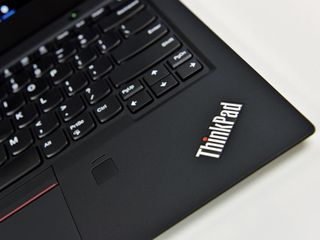
I literally had to upgrade the RAM in every single ThinkPad I used. Again, things seemed to start out OK, but after a few months, my ThinkPads slowed to a crawl. Of course, swapping out a stick of RAM for some more isn't really a big deal, and IT usually handled it for me. But it would often take them a few weeks to get to me, which meant dealing with a sluggish machine until the problem could be fixed. Not really the ThinkPad's fault, I know. But still.
I could go on. However, this post is already longer than it should be, and I'm not even finished yet. Plus, you get the point.
What's next for ThinkPads (or, goodbye ol' friend)
Lenovo is at a turning point with the ThinkPad. In fact, it's probably past the turning point, and moving further and further away from the devices described here. That's OK, necessary even.
Dell and HP now offer comparable security and management suites that put them on par with Lenovo.
Enterprise technology has also changed, and companies aren't necessarily looking for the "safest bet" anymore — or at least all of them aren't. Many PC rivals, such as Dell and HP, now offer many enterprise-friendly machines with comparable security and management suites that put them on par with Lenovo's offerings in many ways.
And even Apple, which doesn't truly cater to IT departments — just ask any IT worker what they think of Apple's enterprise support — has made a lot of headway.
ThinkPads just don't stand out from the pack in business these days in the same ways.
As such, today's ThinkPads, like the sleek X1 Carbon 2017 and Lenovo's other best laptops, including the ThinkPad X1 Yoga, Ideapad 310 and the Yoga 910, look and feel more like Apple's MacBooks than the ThinkPads of old. Why? That's what modern users, and to some extent, businesses want today.

Traditional ThinkPads were unassuming, unremarkable and unabashed workhorses that were not designed to draw attention, only to help serious people get real work done. Because of these things, when you walked into a conference room or a press room in the early 2000s, sat down with a ThinkPad and looked around you, there was a slight sort of camaraderie between fellow ThinkPad users. It wasn't much, but it was something.
The folks with ThinkPads were there to get the job done.
The folks with ThinkPads were there to get the job done, not to show off their tech hardware.
Many of today's ThinkPads are built for business, but Lenovo is clearly going for a different crowd, as well, with obviously consumer-focused devices. Again, that's OK. It's just different ... and maybe a little sad, at least for those of us who remember a time when using a ThinkPad said something about you that may not have been cool, per se, but was still something to be proud of.
Check out our list of Lenovo's best laptops for a look at the company's latest PC lineup:
Al Sacco is content director of Future PLC's Mobile Technology Vertical, which includes AndroidCentral.com, iMore.com and WindowsCentral.com. He is a veteran reporter, writer, reviewer and editor who has professionally covered and evaluated IT and mobile technology, and countless associated gadgets and accessories, for more than a decade. You can keep up with Al on Twitter and Instagram.

